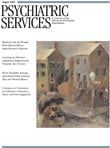Dancing in the Streets: A History of Collective Joy
In Dancing in the Streets, cultural historian and author Barbara Ehrenreich has written a fascinating, albeit somewhat uneven, book about the phenomenon of communal, shared ecstatic ritual. Ehrenreich posits that "the capacity for collective joy is encoded into us almost as deeply as the capacity for erotic love of one human for another." She carefully defines the rituals and behaviors that constitute collective joy. She also traces the historical roots, beginning with ancient Greek civilizations, and elaborates on political, religious, and philosophical forces that have stifled the expression of a very natural human longing to celebrate and rejoice in one another's presence.
The author's discussion of ecstatic expression in the context of the epidemic of melancholia that ushered in the 17th century is especially intriguing. Ehrenreich draws the reader's attention to the increase in depression that coincided with the decline and outright suppression of pleasurable, communal revelry. She conjectures that the century that gave us the rise of the individual and beginning exploration of the "inner self" also gave us a growing number of individuals who felt isolated and anxious. In earlier times, shared dance and celebratory festivals gave individuals a chance to merge with the community and perhaps experience the immunizing effect of joyfulness. Ehrenreich concludes that while the suppression of revelry by both the church and the state may not have caused depression, it removed a potential source of comfort from the reach of average citizens.
Ehrenreich also attempts, somewhat less successfully, to analyze modern examples of collective joy, such as rock concerts, sporting events, and the political rallies of the Fascist era. Perhaps because these events all seem to lack the spiritual dimension of ecstatic joy that allows individuals to transcend themselves and be filled with the power of a shared deity, her discussion in this area falls somewhat short. She herself acknowledges that the lavish parades and rallies of the Nazis were more like orchestrated audience participation than any real shared joyfulness. Similarly, the camaraderie of tailgate parties, the movement of fan "waves," and the swoons of dancing teenagers seem not to have the lasting impact of communal rejoicing.
By focusing on an important human phenomenon not often acknowledged by the mental health community, Ehrenreich invites the reader to consider the broader question of what exactly constitutes mental health. If we spend our days in front of a computer, shut off from the fellowship of others, or if we live mainly in our heads, out of touch with our bodies except for an hour or two at the gym spent exercising alone, are we missing an important, life-affirming part of what it means to be a healthy human? Certainly self-help purveyors exhort readers to find their inner happiness and follow their hearts, but rarely is the role of others, not as network members or support systems but as co-celebrants in the festival of life, mentioned as important, perhaps even essential, to our well-being not only as individuals but as communities and societies as well.



